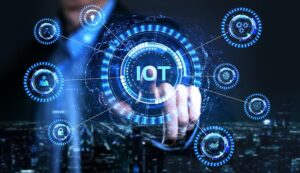The next big thing in telecommunications is 5G technology, which promises to change the way we connect, talk, and interact with the digital world. As the fifth generation of mobile networks, 5G is a huge leap forward from previous mobile networks, offering faster speeds, lower latency, and better connectivity. The latest advancements in 5G technology pave the way for a new era of invention that will impact many areas of our lives and businesses.
1. How 5G Technology Will Change Over Time
5G technology builds on previous generations of mobile networks, all of which have made small but useful improvements. Voice calls are the main feature of 1G. 2G added text messaging and some data capabilities. 3G increased data speeds, making it possible to surf the web and use multimedia applications. 4G significantly improves on these capabilities by delivering faster speeds and better network efficiency, making HD streaming and the use of advanced mobile apps possible.
5G is very different from previous generations because it focuses on three main areas: very high data transfer speeds, low latency, and connecting a large number of devices. This new network architecture is designed to meet the growing demand for more bandwidth, support new technologies, and make room for more connected devices.
2. Transfer Data Very Quickly
One of the most impressive things about 5G technology is that it can transfer data very quickly. With speeds of up to 10 Gbps, 5G is faster than 4G, which has speeds of up to 1 gigabit per second (Gbps). This massive speed boost means you can download and upload files almost instantly, allowing you to stream HD content smoothly, transfer files quickly, and communicate with others in real-time.
5G’s faster speeds are achieved by millimeter waves (24 GHz and above), which are higher-frequency radio waves. These frequencies can transmit more information, but they can’t travel as far and can be blocked by things that get in the way. To solve this problem, 5G networks use a large number of small base stations. These are low-power base stations that cover certain areas and provide capacity. This approach allows users to connect quickly, even in densely populated cities.
3. Low Latency for Real-Time Applications
Another key component of 5G technology is latency, the time it takes to send and receive data. 5G should have a latency of just 1 millisecond (ms), compared to 30 to 50 milliseconds for 4G. This reduction in latency is important for applications that require real-time response, such as self-driving cars, remote surgery, and online gaming.
The low latency of self-driving cars allows the vehicle to talk to its surroundings quickly, allowing for almost instantaneous decisions and actions. Less latency means surgeons can perform precise procedures even when far away from the patient during a remote surgery. Low latency eliminates lag and speeds up response times, making online gaming smoother and more immersive.
4. Massive Device Connectivity
The goal of 5G technology is to allow large numbers of devices to connect simultaneously. About 2,000 devices per square kilometer can connect to a 4G network. Up to 1 million devices can be connected to a 5G network in the same area. Many different devices, sensors, and applications are connected in the Internet of Things (IoT), and this capability is important for its growth.
5G supports many devices, allowing cities to become smart. In smart cities, things like traffic lights, waste management systems, and energy grids are all connected and improved by exchanging data in real-time. Smart homes are also growing, where devices like thermostats, security systems, and appliances can communicate with each other and be controlled remotely.
5. Improving 5G Infrastructure
To use 5G technology, the infrastructure needs to be significantly improved. The dense small-cell networks we discussed earlier require a lot of design and coordination. 5G networks also use advanced technologies like beamforming and massive MIMO (Multiple Input Multiple Output) antennas.
Beamforming is a method of sending radio signals to specific people or devices, rather than sending signals in all directions. This centralized approach improves signal quality and reduces interference, making the network work better overall. Massive MIMO antennas with a large number of antennas can allow multiple users to talk at the same time, further increasing capacity and coverage.
6. 5G and New Technologies
The advancement of 5G technology is closely linked to the development of many other new technologies. The high speeds and low latency of 5G are ideal for augmented reality (AR) and virtual reality (VR). To enable immersive and interactive experiences, these technologies must transmit data quickly and reliably. 5G will enable AR and VR applications, from gaming and entertainment to education and training, to be more realistic and responsive.
The deployment of 5G will also contribute to the development of smart cities and smart infrastructure. 5G is key to making cities more efficient, sustainable, and connected, as it can connect large numbers of devices simultaneously and send and receive data in real-time. Smart networks, intelligent traffic management, and advanced environmental monitoring will all become easier and better with 5G.
Conclusion
Finally, the latest advancements in 5G technology are a huge leap forward in communications. 5G will change the way we use technology, enabling very fast data transfers, low latency, and the ability to connect large numbers of devices simultaneously. It will also help create new applications and services. As technology continues to develop, it will have a huge impact on many aspects of our lives, accelerating progress and shaping the connected future.
FAQs
1. What does 1.5G mean?
5G technology is the fifth generation of mobile network technology. It came after 4G. It has higher data transfer speeds, lower latency, and better connectivity than the older generation. 5G is designed to connect more devices and run a wide range of applications, from better mobile broadband to more advanced IoT solutions.
2. How much faster is 5G than 4G?
5G technology can deliver speeds of up to 10 Gbps, sometimes faster than the 1 Gbps that 4G can deliver. This speed increase results in faster downloads, smoother transfer of HD content, and better data transfer.
3. What is latency and why does 5G care?
Latency is the amount of time that elapses between sending and receiving data. 5G hopes to reduce latency to 1 millisecond, compared to 30-50 milliseconds for 4G. Low latency is important for real-time applications that require fast responses, such as self-driving cars, remote surgery, and online gaming.
4. How does 5G make it possible to connect so many devices?
5G networks can support up to 1 million devices per square kilometer, up from the 2,000 devices that a 4G network can handle. Modern technologies such as network slicing and high-frequency millimeter waves make this possible. These technologies make it possible to connect a large number of devices and manage the network effectively.
5. What does a 5G central location network mean?
Network slicing is a feature of 5G technology that allows network operators to create multiple virtual networks within a single 5G network. Each slice can be customized to meet the needs of different services or applications, such as high-speed internet, low-latency applications, or large-scale IoT deployments.




